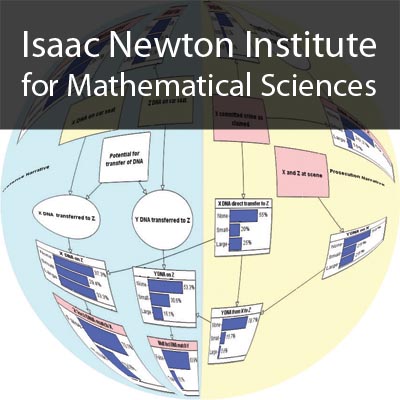Interpreting (chemical) forensic evidence in a Bayesian framework: a multidisciplinary task
44 mins 26 secs,
169.92 MB,
iPod Video
480x270,
29.97 fps,
44100 Hz,
522.12 kbits/sec
Share this media item:
Embed this media item:
Embed this media item:
About this item

| Description: |
Gabriel Vivó-Truyols
Tuesday 8th November 2016 - 09:30 to 10:15 |
|---|
| Created: | 2016-11-10 14:44 |
|---|---|
| Collection: | Probability and Statistics in Forensic Science |
| Publisher: | Isaac Newton Institute |
| Copyright: | Gabriel Vivó-Truyols |
| Language: | eng (English) |
| Distribution: |
World
|
| Explicit content: | No |
| Aspect Ratio: | 16:9 |
| Screencast: | No |
| Bumper: | UCS Default |
| Trailer: | UCS Default |
| Abstract: | Co-authors: Marjan Sjerps (University of Amsterdam / Dutch Forensic Institute), Martin Lopatka (University of Amsterdam / Dutch Forensic institute), Michael Woldegebriel (University of Amsterdam), Andrei Barcaru (University of Amsterdam)
The interpretation and evaluation of chemical forensic evidence is a challenging task of multidisciplinary nature. Interaction between diferent disciplines (Bayesian statisticians, analytical chemists, signal processers, instrument expers, etc.) is necessary. In this talk I will illustrate different cases of such interaction to evaluate pieces of evidence in a forensic context: The first case is the evaluation of fire debris using two-dimensional gas chromatography. Such a technique analyses fire debris to look for traces of (pyrolized) hydrocarbons. However, the classification of such hydrocarbons is a difficult task, demanding experts in (analytical) chemistry. Even more difficult is to interpret such evidence in a Bayesian framework. The second case is the application of Bayesian inference in the toxicology laboratory. In this case, a set of targeted compounds is analysed via LC-MS. Instruments are normally pre-processing the data in a deterministic manner, providing the so-called peak table. We propose an alternative that uses the raw data as evidence, instead of using such peak table. The third case is the exploration of differences between different analysis, in order to find illegal additives in a complex matrix. In this case, the use of Jensen-Shannon divergence has been applied in a Bayesian framework to highlight such differences. |
|---|---|
Available Formats
| Format | Quality | Bitrate | Size | |||
|---|---|---|---|---|---|---|
| MPEG-4 Video | 640x360 | 1.94 Mbits/sec | 647.13 MB | View | Download | |
| WebM | 640x360 | 595.44 kbits/sec | 193.86 MB | View | Download | |
| iPod Video * | 480x270 | 522.12 kbits/sec | 169.92 MB | View | Download | |
| MP3 | 44100 Hz | 249.81 kbits/sec | 81.36 MB | Listen | Download | |
| Auto | (Allows browser to choose a format it supports) | |||||

